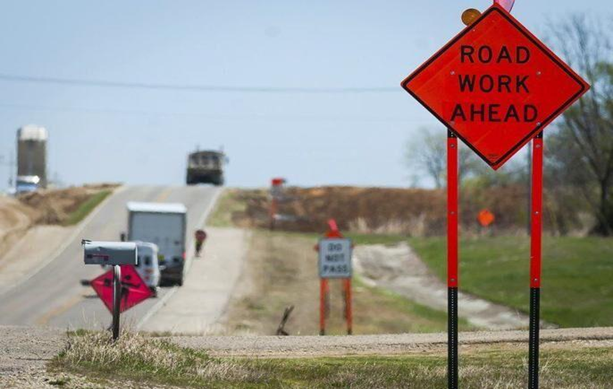
Narrow state highways in eight Oklahoma counties are to be repaved and widened under a $41.5 million loan of federal funds to the state highway department
Source: Credit to Oklahoma Department of Transportation
| Project Name | Rural Two-Lane Advancement And Management Plan (RAAMP) in Oklahoma |
|---|---|
| Location | Harper, Kingfisher, Pontotoc, Caddo, Pittsburg, McClain, Bryan, and Ellis counties in Oklahoma |
| Project Sponsor / Borrower | Oklahoma Capitol Improvement Authority (OCIA) & Oklahoma DOT |
| Program Areas |
|
| Value Capture Techniques | N/A |
| Mode | Rural Roads & Bridges |
| Description | The Oklahoma Department of Transportation is upgrading numerous rural roads without shoulders to enhance safety through its Rural Two-Lane Advancement And Management Plan (RAAMP). Build America Bureau has provided a low-interest, long-term loan of $41.55 million to the Oklahoma Department of Transportation (ODOT) to finance 49 percent of the $85.97 million in eligible costs. The project will provide significant safety improvements, one of the primary objectives of RAAMP. The project is a compilation of eight rural projects that will add nearly 27 miles of 8-foot shoulders and asphalt resurfacing as well as 6.4 miles of roadway reconstruction. The projects are located in Harper, Kingfisher, Pontotoc, Caddo, Pittsburg, McClain, Bryan, and Ellis counties in Oklahoma. The additional money provided by the federal low interest rate loan will free up ODOT funding to be used on other two-lane highways. Oklahoma has 5,300 miles of two-lane highways with deficient shoulders, which is a significant safety concern for drivers. The TIFIA Rural Project Initiative aims to strengthen rural America's transportation infrastructure. The initiative will fund projects worth between $10 million and $100 million in locations with populations of less than 150,000 people. Its benefits include borrowing up to 49 percent of a project's qualified costs, as opposed to the 33 percent granted by regular TIFIA loans. Oklahoma will also get a fixed interest rate on its loan equal to one-half of the US Treasury rate for the loan's equivalent maturity and closing date. The focus of the Rural Project Initiative is to develop transportation infrastructure in rural communities by making loans more accessible to small communities. |
| Cost | $85.97 M, TIFIA eligible costs |
| Funding Sources | TIFIA Direct Loan - $41,547,440/48 percent ODOT Equity- $44,425,787 / 52 percent (combined with Federal Formula Funds & State Funds) |
| Project Delivery / Contract Method | Design-Bid-Build |
| Private Partner | N/A |
| Project Advisors / Consultants | N/A |
| Lenders | USDOT |
| Duration / Status | Projects are under construction |
| TIFIA Credit Assistance | $41.55 M, 49 percent of the $85.97 million in eligible costs for the Rural Two-Lane Advancement And Management Plan (RAAMP). The state Transportation Department will repay the TIFIA loans over a 20-year period with appropriations from the Legislature. |
| Financial Status / Financial Performance | The TIFIA credit agreement was signed on May 27, 2022. A lease agreement provides that ODOT will make regular payments to the OCIA in amounts sufficient to pay the principal, interest, and related costs of the TIFIA loan. |
| Innovations |
|
| Related Links / Articles | |
| Contacts | Mr. Rick Johnson, Deputy Director Jared Schwennesen, Division Manager Shelly Williams, P.E., Local Government Division Engineer |